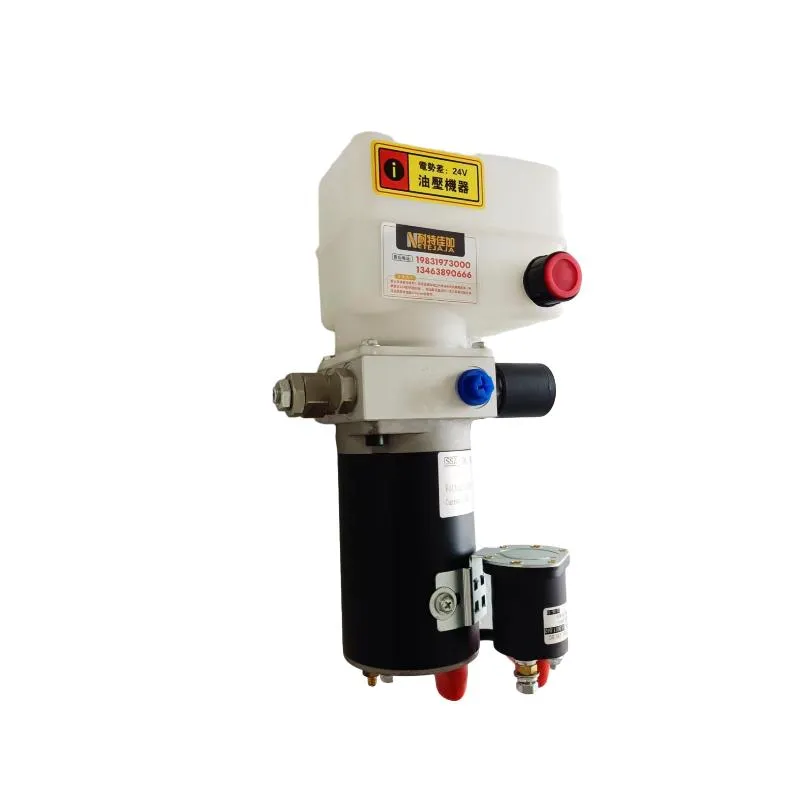Sep . 03, 2024 00:44 Back to list
High-Quality Hydraulic Cylinder Manufacturers | Force in Hydraulic Cylinder
Understanding Force in Hydraulic Cylinders Key Insights from Manufacturers
Hydraulic cylinders are integral components in various industrial applications, providing the necessary force to perform tasks in machinery, construction equipment, and automotive systems. The force generated by a hydraulic cylinder is a critical factor that influences its performance and suitability for specific tasks. In this article, we will explore the essential aspects of force in hydraulic cylinders, as highlighted by manufacturers in this field.
The Basics of Hydraulic Force
At the core of hydraulic operation is Pascal's law, which states that pressure applied to a confined fluid is transmitted undiminished throughout the fluid. This principle enables hydraulic cylinders to convert hydraulic energy into mechanical force efficiently. The force exerted by a hydraulic cylinder can be calculated using the formula
\[ \text{Force} = \text{Pressure} \times \text{Area} \]
Where pressure is measured in pounds per square inch (psi) and area is the cross-sectional area of the cylinder's piston.
Key Factors Influencing Force
Manufacturers emphasize several critical factors that affect the force output of hydraulic cylinders
1. Cylinder Bore Size The diameter of the cylinder's bore plays a significant role in determining the force output. A larger bore area translates to more hydraulic fluid and, consequently, greater force produced. Manufacturers often provide a range of bore sizes to cater to different requirements, optimizing for both power and efficiency.
2. Operating Pressure The pressure at which the hydraulic system operates directly influences the force generated. Higher operating pressures yield greater force outputs, allowing for more demanding applications. However, manufacturers often recommend specific pressure limits to ensure safety and longevity of the hydraulic components.
force in hydraulic cylinder manufacturer

3. Fluid Dynamics The type of hydraulic fluid used can also impact the performance of the cylinder. Viscosity, temperature, and the fluid's compressibility can all affect the cylinder's responsiveness and overall efficiency.
4. Rod Size The size of the rod in the cylinder is another factor that influences the net force output. While a larger rod diameter can withstand higher forces, it also reduces the effective area of the cylinder, thereby reducing overall output force.
5. Design and Material The design quality and materials used in manufacturing hydraulic cylinders are paramount. High-quality materials contribute to durability and performance while ensuring that the cylinder can handle varying loads without failure.
Applications of Hydraulic Cylinders
Hydraulic cylinders are widely used across different industries, including construction, manufacturing, and agriculture. In construction, they are used in equipment like excavators and loaders to lift heavy loads. In manufacturing, robotic arms utilize hydraulic cylinders for precision movements. Understanding the force capabilities of hydraulic cylinders allows operators to select the right equipment for their specific tasks, ensuring efficiency and safety.
Choosing the Right Hydraulic Cylinder
When selecting a hydraulic cylinder, manufacturers often recommend assessing the requirements of the application meticulously. Factors such as load capacity, stroke length, and environmental conditions should all be considered. Consulting with experienced manufacturers can help in choosing the right specifications that will provide optimal performance and reliability.
Conclusion
Understanding the force generated by hydraulic cylinders is essential for anyone involved in industries utilizing such technology. Key factors influencing this force include cylinder bore size, operating pressure, and material quality. By making informed choices based on these variables, users can ensure the effective and efficient performance of hydraulic systems, ultimately leading to enhanced productivity in various applications. As technology advances, manufacturers continue to innovate, providing solutions that meet the evolving needs of industries worldwide.
-
Fork Lift Power Units - Hebei Shenghan | Efficiency, Reliability
NewsJul.13,2025
-
1.5-Ton Turbocharged Cylinder-Hebei Shenghan|Hydraulic Solution,Energy Efficiency
NewsJul.13,2025
-
Auto Hoist Power Units-Hebei Shenghan|Efficiency&Industrial Lifting
NewsJul.13,2025
-
Double Acting Power Units-Hebei Shenghan|Hydraulic Solutions,Industrial Efficiency
NewsJul.13,2025
-
1.5 Ton Lifting Cylinder 70/82-40-290-535 - High-Performance Hydraulic Solution | Hebei Shenghan
NewsJul.13,2025
-
Fork Lift Power Units - Hebei Shenghan | Efficiency&Reliability
NewsJul.13,2025
